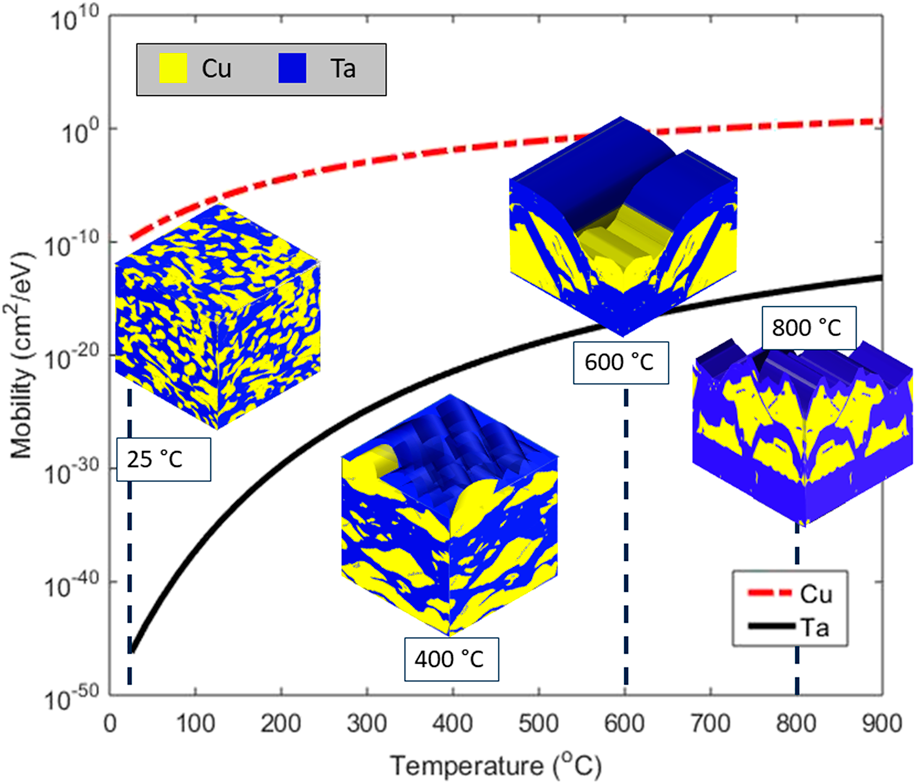Crossref Citations
This article has been cited by the following publications. This list is generated based on data provided by
Crossref.
Powers, Max
Derby, Benjamin
Nerlige Manjunath, Sudeep
and
Misra, Amit
2020.
Hierarchical morphologies in co-sputter deposited thin films.
Physical Review Materials,
Vol. 4,
Issue. 12,
Raghavan, Rahul
Chen, Pei-En
Jiao, Yang
and
Ankit, Kumar
2021.
Phase-field modeling and n-point polytope characterization of nanostructured protuberances formed during vapor-deposition of phase-separating alloy films.
Journal of Applied Physics,
Vol. 129,
Issue. 24,
Powers, Max
Stewart, James A.
Dingreville, Rémi
Derby, Benjamin K.
and
Misra, Amit
2021.
Compositionally-Driven Formation Mechanism of Hierarchical Morphologies in Co-Deposited Immiscible Alloy Thin Films.
Nanomaterials,
Vol. 11,
Issue. 10,
p.
2635.
Wang, Xiao
Wang, Mengjie
Liu, Min
Liu, Yue
and
Wang, Weidong
2021.
Atomic study on the deform mechanism of CuTa/Cu and CuTa/Ta nanolaminates.
p.
498.
Li, Zezhou
Cheng, Justin Yutong
Poplawsky, Jonathan D.
Xu, Shuozhi
Baldwin, Jon K.
Beyerlein, Irene J.
and
Mara, Nathan A.
2022.
Critical Length Scales for Chemical Segregation at Cu/Nb 3D Interfaces by Atom Probe Tomography.
SSRN Electronic Journal ,
Abram, Marcin
Burghardt, Keith
Ver Steeg, Greg
Galstyan, Aram
and
Dingreville, Remi
2022.
Inferring topological transitions in pattern-forming processes with self-supervised learning.
npj Computational Materials,
Vol. 8,
Issue. 1,
Desai, Saaketh
and
Dingreville, Rémi
2022.
Learning time-dependent deposition protocols to design thin films via genetic algorithms.
Materials & Design,
Vol. 219,
Issue. ,
p.
110815.
Warres, Clementine
Meyer, J.C.
Lutz, T.
Albrecht, P.
Schröppel, B.
Engelhart, W.
and
Kümmel, J.
2023.
Ion- and temperature-induced 3-dimensional nanoscale patterning in Ti1-xAlxN deposited by High Power Impulse Magnetron Sputtering.
Thin Solid Films,
Vol. 781,
Issue. ,
p.
139977.
Derby, Benjamin K.
Gomez-Hurtado, Lucia R.
Copeland, Guild
Hattar, Khalid
and
Briggs, Samuel
2023.
Deposition-controlled phase separation in CuNb metallic alloys.
Thin Solid Films,
Vol. 787,
Issue. ,
p.
140083.
Li, Zezhou
Cheng, Justin Y.
Poplawsky, Jonathan D.
Xu, Shuozhi
Baldwin, Jon K.
Beyerlein, Irene J.
and
Mara, Nathan A.
2023.
Critical length scales for chemical heterogeneity at Cu/Nb 3D interfaces by atom probe tomography.
Scripta Materialia,
Vol. 223,
Issue. ,
p.
115078.
Echeverria, M J
Fensin, S J
and
Dongare, A M
2024.
Shock-induced twinning/detwinning and spall failure in Cu–Ta nanolaminates at atomic scales.
Modelling and Simulation in Materials Science and Engineering,
Vol. 32,
Issue. 8,
p.
085014.
Li, Jiejie
Dai, Lehui
and
Li, Jianjun
2025.
Layer thickness dependent strengthening and strain delocalization mechanism in CuTa nanopillars with nanoscale amorphous/amorphous interfaces.
Materials Chemistry and Physics,
Vol. 331,
Issue. ,
p.
130197.
Liu, Xiaoqing
Zhang, Pingze
Zhan, Mengling
Dang, Bo
Yang, Kai
and
Han, Peide
2025.
Capture and Diffusion of Hydrogen in Tantalum and Copper with Vacancy Defects: A First-Principles Study.
ACS Applied Materials & Interfaces,
Vol. 17,
Issue. 1,
p.
2376.
